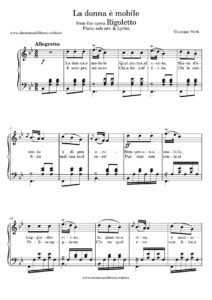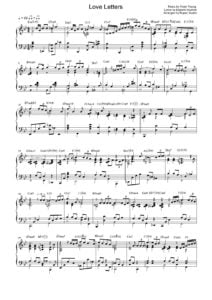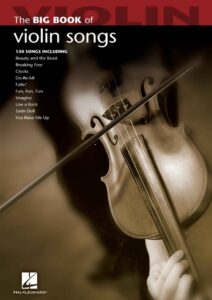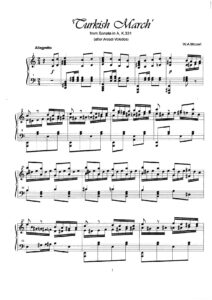Table of Contents
“Desafinado” by Antonio Carlos Jobim, Newton Mendonça and Jon Hendricks
There has been a healthy dose of Latin songs that have made their way into the Great American Songbook—after all—Central America and South America are every bit as “American” as the United States. Among the composers of Latin jazz standards, the inimitable guitarist/composer, Antonio Carlos Jobim (1927-1994), stands tall. Jobim composed a great many enduring songs that jazz musicians have latched onto as essential Great American Songbook gems.
Newton Mendonça wrote the original Portuguese lyrics, after which the vocalese master, Jon Hendricks (b. 1921), created an English version. The resulting work is an interesting study in both lyrics and music. The Portuguese word “desafinado” essentially means “out of tune,” which justifies Jobim’s pointed use of dissonant intervals and non-diatonic melody notes. The pathway followed by the song explores various tonal centers in search of consonance, and the lyricists beautifully captured this essence.
Best Sheet Music download from our Library.
Form and Melody
The form of this song departs from the common AABA and ABAB, thirty-two bar forms. The eight-bar A theme (measures 1-8) is comprised of two four-bar phrases, each mostly stepwise (walking up a perfect fourth) and shaped like a double arc, ending on the flat 5 of the V/V chord in m. 3 and on the flat 5 of the iii7(b5) chord in m. 7).
A is followed by an eight-bar B theme (mm. 9-16). B can also be divided into two phrases, and begins with a quick interval of an ascending seventh starting on an offbeat, which leads directly into a descending line, first stepwise, then involving leaps that highlight dissonances.
Please, subscribe to our Library.
If you are already a subscriber, please, check our NEW SCORES’ page every month for new sheet music. THANK YOU!
The A theme reappears in the next eight bars (mm. 17-24) before a C theme (reminiscent of B for only the first bar) serves as a transition into a new key a major third higher than tonic (mm. 25-32). A new section begins (D at mm. 33-40) and is melodically characterized by a major second stepping back and forth between scale degrees 5 and 6 in the new key, after which a transposition of the new melody motif (the E theme, up a minor third from the D theme) carries the song to the original dominant (V) to bring the listener back to the A theme in the tonic key.

This A statement ends a bit differently, creating an arc of energy at the apex of the second phrase, so it is called A’ (A-prime).
This modification of A is often a very useful songwriting strategy, as it creates interest and variation, bringing the song around to a fresh ending having a touch of new material. This new material begins with a four-bar phrase of descending stepwise melodic sequences (“We’re bound to get in tune again before too long,”) which connect to another eight-bar melodic group characterized by tonal repetition of the tonic pitch.
Jobim utilized a type of cadential extension here, creating a twelve-bar final theme instead of the expected eight. This final twelve bar segment resembles a coda or “tail” built right into the piece (F theme). When one steps back, one can see that Jobim utilized a loose sonata form here—ABAC represents the Exposition, D and E are the Development (a transitional section), A’ clearly represents the Recapitulation (return of A) and the F theme functions as an obvious coda.

Jobim’s use of motives plays a strong role in this melody’s originality, as does his playing with dissonant tones outside the diatonic scale. Predominant motives include the opening four steps up the diatonic major scale in the very first bar. This melodic and rhythmic motive appears in both forward and retrograde varieties (retrograde in m. 9, with variation at m. 13, then retrograde in sequence with a downward step progression at mm. 57-58). A second motive Jobim employs is the rocking whole step, first cleverly introduced at m. 29 (“like the bossa nova, love should swing.”).
He features this motive in the last four bars of the first major section of the piece, anticipating and announcing the next large section’s primary motive. At mm. 33-48 (the D theme), Jobim combines both motives in an alternating, smoothly flowing pattern, showing his mastery of creating motivic and melodic unity. Hendricks mirrors the more consonant music in this section by using text reminiscent of bygone happy times (“We used to harmonize two souls in perfect time…”).
The motive in the final twelve bars, a repeated tonic pitch, successfully makes the composer’s point of finally attaining concordance (there is nothing more concordant than a unison pitch) following a melody peppered with dissonant leaps and unexpected tonal shifts. Hendricks’ response here reinforces the music with an idealized text depicting two hearts and souls at last abiding in perfect harmony.
Text Setting
As acknowledged above, the lyrics for “Desafinado” were originally in Portuguese, and these are still performed today. Whenever a writer is faced with the challenge of re-setting a text from another language to existing music, there are several important considerations.
First, one must comprehend the difference between a translation and a transliteration. A translation represents the precise meaning of a text in another language. A transliteration merely fits the music into a new language’s pattern of declamation—it may have little or nothing to do with the original text’s meaning.
A competent lyricist will have a full understanding of the original text’s translation before attempting a new transliteration into another language. Some transliterations respect the original text as well as convey the general meaning and theme of the composer’s and lyricist’s intent. Other transliterations seem to start with a clean slate and find alternate ways to convey a composer’s intent (that seems to be the case here with Hendricks’ lyrics).
Either way, tastefully setting the text in a manner that suits the singer and preserves the integrity of both music and lyrics becomes the goal. When studying a word-by-word translation of this original text, one quickly discovers that the Portuguese song’s theme is about a singer feeling hurt by her lover’s disapproval of her out-of-tune singing. She chastises him for not remembering that even those who sing out of tune have fragile hearts.
By contrast, Hendricks’ lyric approach changes the focus of the song to describe two people whose dissonant hearts must be made consonant for love to thrive. Regardless of the version preferred, a comparison of these two very different perspectives lends itself to a deeper understanding of the music and how it can be interpreted. Two lyricists may set the same piece of music using completely different paradigms. In this case, Mendonça spoke from a literal point of view regarding the dissonance expressed in the song title, while Hendricks spoke from a figurative, metaphorical standpoint.
Harmony
Jobim’s initial harmonic move (between the first and second chords of the piece) immediately sets the tone for a theme of dissonance throughout the song. He moves from a casual I chord to a V7(b5)/V—in no way providing smooth harmony or easy voice leading. He then mollifies the harshness by turning that chord into a minor chord over the same root and moves through a ii7-V7 progression which leads to a surprising vi7(b5), reflecting the previous b5 chord. The melody notes here are those dissonant b5s and b9s.
His B theme starts with ii7 and proceeds through a circle of dominant chords, but does not find its way back to the V of tonic before he interjects a dissonant major 7th built on the b9 immediately preceding a turnback progression (V7-I) to return to A. Jobim’s unexpected harmonic shifts effectively create the dissonant tension illuminated in the text. The C theme combines the two motives previously described and shifts the harmony from I to III. Not coincidentally, Hendricks’ lyrics beautifully reflect the harmony at this juncture: “Seems to me you’ve changed the tune we used to sing…”
At the D theme, Jobim utilizes a chromatically ascending bass from I-dim7/ii-ii-V7 followed by a typical I-vi-ii-V7 before modulating up a third and repeating the chromatic ascent (in the new key). He then transforms the V7 chord of that new key into a minor ii of the original tonic, moves to a non-diatonic, flat vii chord (Hendricks again catches this, and writes “slightly out of tune” in the measure containing this “wrong” chord) before landing on a V7/V-V7-I progression that returns to the A theme. Harmonically the song assumes a ii-V7-iii(b5)-VI7-ii shape at the point where A digresses to become A’ (m. 55, “sing a song of loving”).
In the four-bar transition (mm. 57-60) that opens the F theme, the harmony passes through an unusual juxtaposition of ii-iv6-I (“we’re bound to get in tune again before too long…”) before extending a cadence via a roundabout V7/V-bVII7-V7/V which finally makes its way to ii-V7-I in the tonic key.
Conclusions
“Desafinado” takes the idea of wordpainting (reflecting textual meanings in music) to a new level in so many ways, and yet, one could argue the reverse if the music were composed first (that the lyricists served as obsequious handmaidens of the music). Either way, both Jobim and Hendricks showed their cleverness by creating a piece of music in which the wedding of music and text are readily apparent in the way the text parallels non-diatonic, melodic pitch choices, dissonant harmonic tension, and the third-related, leaping tonics that wander throughout the A-B-A-C-D-E-A’-F (sonata) form this unusual piece exhibits.
The enduring renown of this piece is remarkable, given its fascinating complexity, and yet, Jobim was careful to balance complexity whenever it occurred with something relatively simple, thereby maintaining the song’s accessibility and relevance for generations of listeners. For example, when the melody was challenging and non-diatonic, he tended toward complementing it with more traditional, gentle-on-the-ear harmonies, never seeking to completely confound those performing or listening to the song.
Similarly, when the harmony explored new territory, the melody tended to be motivic and, therefore, familiar. Such exquisite balance between complexity and simplicity, light and dark, dynamic and static, and dissonance and consonance, appears to be ever present in so many wonderful works that make up the Great American Songbook.
Source
Jobim’s Sheet Music download.
Browse in the Library:
| Artist or Composer / Score name | Cover | List of Contents |
|---|---|---|
| Verdi – Libiamo Ne Lieti Calici (La Traviata) (Musescore File).mscz | ||
| Verdi – Va pensiero Piano Solo arr. NABUCCO ACTE III Choeur des ésclaves hébreux.mscz | ||
| Verdi La dona e mobile Rigoletto Piano Solo with lyrics |
 |
|
| Verdi La Dona E Mobile Rigoletto Piano Solo With Lyrics Musescore File.mscz | ||
| Verdi Requiem Cambridge Music Handbooks (Book) |
 |
|
| Vernon Duke Autumn In New York |
 |
|
| Vernon Duke – Autumn In New York (guitar arr. with TABs) |
 |
|
| Vertical Horizon – Best I Ever Had | ||
| Via con me (Paolo Conte) | ||
| Via del Campo (Fabrizio De Andrè) | ||
| Vianne Sets Up Shop (Chocolat OST) Rachel Portman | ||
| Vicente Amigo Ciudad De Las Ideas (Guitar TAB) |
 |
|
| Victor Herbert’s masterpiece Ah Sweet Mystery Of Life |
 |
|
| Victor Jara Un Canto Truncado Joan Jara (Book) Español – Spanish Biography – Biografía |
 |
|
| Victor Labenske Piano Miniatures 24 Short Solos In All Major And Minor Keys (Intermediate Piano) |
 |
Victor Labenske Piano Miniatures 24 Short Solos In All Major And Minor Keys (Intermediate Piano) |
| Victor Wooten Best of – transcribed by Victor Wooten Guitar Tabs |
 |
Victor Wooten Best of – transcribed by Victor Wooten Guitar Tabs |
| Victor Young When I Fall In Love |
 |
|
| Victor Young – Blue Star The Medic Theme |
 |
|
| Victor Young – Stella By Starlight Jazz Standard |
 |
|
| Victor Young – When I Fall In Love |
 |
|
| Victor young – When I Fall In Love Sheet Music as recorded by Celine Dion and Clive Griffin (fromm Sleepless in Seate) |
 |
|
| Victor Young (Bill Evans) – When I Fall In Love (Musescore File).mscz | ||
| Victor Young And Peggy Lee Johnny Guitar |
 |
|
| Victor Young Around the World (piano solo sheet music) | Victor Young Around the World (piano solo sheet music) | |
| Victor Young Around The World In 80 Days Easy Piano Solo |
 |
|
| Victor Young Love Letters (Piano Solo arr.) |
 |
|
| Victor Young Stella by Starlight | Stella-By-Starlight-Victor-Young | |
| Victor Young Stella By Starlight Easy Piano Solo |
 |
|
| Victor Young Stella By Starlight Victor Young & Ned Washington Sheet Music 1946 Jazz Standard (Vintage sheet music) |
 |
|
| Vida Y Arte De Glenn Gould – by Bazzana Kevin (Español Spanish) |
 |
|
| Viktor Semenuita Suite The Spring Awakening for Guitar quartet |
 |
|
| Villa-Lobos – 12 Guitar Etudes (Doze Estudios para Violao) |
 |
|
| Villa-Lobos – Bachiana Brasileira no. 4 | ||
| Villa-Lobos – Bachianas Brasileiras No. 5 – Aria (Cantilena) partitura |
 |
|
| Villa-Lobos – Choros (N°1) Guitar Sheet Music (Musescore File).mscz | ||
| Villa-Lobos – Prelude N° 3 (Musescore File).mscz | ||
| Villa-Lobos -Etude №1 (Musescore File).mscz | ||
| Villa-Lobos A Lenda do Caboclo | Villa-Lobos Lenda do Caboclo | |
| Villa-Lobos Five Preludes for Guitar, W419 |
 |
Wes Montgomery The Early Years (Mel Bay) Jazz Guitar Solos Tablature |
| Villa-Lobos Guia Patrico Album 2 | Villa-Lobos-GP-Album-2 | |
| Villa-Lobos Guia Patrico Album 3 | Villa-Lobos Guia Patrico Album 3 | |
| Villa-Lobos Prelude 1 for Guitar | Villa-Lobos prelude 1 | |
| Villa-Lobos Prelude No 1 (Musescore File).mscz | ||
| Villa-Lobos Tristorosa Guitar arr. by Gorbunov |
 |
|
| Villa-Lobos, Heitor – Obras Completas (complete works for GUITAR) |
 |
Villa-Lobos obra completa guitarra |
| Villa-Lobos, Heitor – Aria (Cantilena) arr. for voice and guitar | Villa-Lobos, Heitor – Aria (Cantilena) arr. for voice and guitar | |
| Villa-Lobos, Heitor – Bachianas Brasileiras No 4 No 2 – Choral Song Of The Jungle | ||
| Villa-Lobos, Heitor – Saudades das selvas brasileras (pour piano) | Villa-Lobos – Saudades das selvas brasileras | |
| Vince Guaraldi A Charlie Brown Christmas |
 |
Vince Guaraldi A Charlie Brown Christmas |
| Vince Guaraldi Christmas Time Is Here |
 |
|
| Vince Guaraldi Linus And Lucy (Piano Solo) Peanuts Theme | Vince Guaraldi Linus And Lucy (Piano Solo) Peanuts Theme | |
| Vince Guaraldi – Cast Your Fate To The Wind | Vince Guaraldi – Cast Your Fate To The Wind | |
| Vince Guaraldi – Linus And Lucy (Piano Solo) Peanuts Theme (Musescore File).mscz | ||
| Vince Guaraldi A Charlie Brown Christmas For Solo Jazz Guitar with TAB |
 |
Vince Guaraldi A Charlie Brown Christmas For Solo Jazz Guitar with TAB |
| Vince Guaraldi A Charlie Brown Christmast Beginning Piano Solos |
 |
Vince Guaraldi A Charlie Brown Christmast Beginning Piano Solos |
| Vince Guaraldi Collection 9 transcriptions |
 |
Vince Guaraldi Collection 9 transcriptions |
| Vince Guaraldi The Christmas Song |
 |
|
| Vince Guaraldi The Christmas Song (Mel Tormé and Robert Wells) Piano Solo | Vince Guaraldi The Christmas Song (Mel Tormé and Robert Wells) Piano Solo | |
| Vineyard Songbook (2011) Guitar Songchords |
 |
Vineyard Songbook (2011) Guitar Songchords |
| Vinicius De Moraes Vols 1,2 & 3 Guitar |
 |
Vinicius de Moraes 1,2 & 3 books |
| Vinnie Moore Masterclass (audio Mp3 Tab And Backing Track) GUITAR TABS and Al Di Meola Reh Video Booklet |
 |
|
| Violin Songs Big Book Of (Songbook) 130 songs |
 |
Violin Songs Big Book Of (Songbook) 130 songs |
| Virtuosity And The Musical Work The Transcendental Studies Of Liszt By Jim Samson Book |
 |
|
| Vittorio Monti Czardas (Piano Solo arr.) |
 |
|
| Vittorio Monti Czardas Piano violin arr. by J. Godderis |
 |
|
| Viva Italia Songbook A Travelogue In Song Piano Vocal Chordsby Curt Appelgren |
 |
Viva Italia Songbook A Travelogue In Song Piano Vocal Chordsby Curt Appelgren |
| Viva La Vida – Coldplay (Musescore File).mscz | ||
| Vivaldi Largo Concerto D Guitar Arr |
 |
|
| Vivaldi Summer The Four Seasons Piano Solo Arr. | Vivaldi Summer The Four Seasons Piano Solo Arr. | |
| Vivaldi The Four Seasons (Piano Solo Arrangement) |
 |
|
| Vivaldi The Four Seasons Guitar arr. (A Suite of Themes) by Alxander Glüklikh |
 |
|
| Vivaldi Violin Concerto In F Major Op. 8 No. 3 Rv. 293 Autumn For Solo Piano | Vivaldi Violin Concerto In F Major Op. 8 No. 3 Rv. 293 Autumn For Solo Piano | |
| Vivaldi – Concert in G minor Summer arr. violin and piano |
 |
|
| Vivaldi – Concerto No. 2 In G Minor Op. 8 Rv 315mov. 3 Presto Summer L’estate Piano Solo Arr. (Musescore File).mscz | ||
| Vivaldi – Concerto No. 2 in G minor, Op. 8, RV 315 mov. 3 Presto Summer L’estate Piano Solo arr. sheet music | Vivaldi – Concerto No. 2 in G minor, Op. 8, RV 315 mov. 3 Presto Summer L’estate Piano Solo arr. sheet music | |
| Vivaldi – Summer The Four Seasons Piano Solo arr..mscz | ||
| Vivaldi – Winter Guitar Arr. Based On Violin Concerto In F Minor Rv 297 L’inverno (Sheet Music) (Musescore File).mscz | ||
| Vivaldi – Winter Guitar arr. based on Violin Concerto in F minor, RV 297 L’inverno (sheet music) | Vivaldi – Winter Guitar arr. based on Violin Concerto in F minor, RV 297 L’inverno (sheet music) | |
| Vivaldi Gloria Piano Reduction |
 |
|
| Vivaldi Master Musicians Series (Book) Biography by Michael Talbot |
 |
|
| Vivo Per Lei – Bocelli | ||
| Vivo per lei (Bocelli – Giorgia) | ||
| VK Vanros Kloud Wings Of Piano |
 |
|
| Vladimir Cosma Les Musiques De Films Vol 2 |
 |
Vladimir Cosma Les Musiques De Films Vol 2 |
| Vladimir’s Blues (Musescore File).mscz | ||
| Volker Bertelmann – Lion Main Theme sheet music |
 |
|
| Volodos Mozart’s Turkish March From Sonata No. 11 |
 |
|
| Volodos – Rachmaninoff Where Beauty Dwells Melodiya Op. 21 No. 7 Version Putsmeiser Piano Solo |
 |
|
| Volumia – Afscheid | ||
| Volumia – Hou Me Vast | ||
| Vorrei (Lunapop) | ||
| W.C. Handy The St. Louis Blues | W.C. Handy The St. Louis Blues | |
| W.C. Handy – The St. Louis Blues (Musescore File).mscz | ||
| W.E. – Evgenis Waltz Abel Korzeniowski |
 |
|
| Wagner – Die Meistersinger von Nürnberg – complete (arr. for piano solo & voice) | Wagner – Die Meistersinger… | |
| Wagner – Die Meistersinger von Nürnberg -Vorspiel (arr. 2 for pianos) | Wagner – Die Meistersinger…Vorspiel | |
| Wagner – Die Walküre Ride of the Valkyries (arr. 2 for pianos) | Wagner – Die Walküre | |
| Wagner – Isoldens Liebestod For Two Pianos | ||
| Wagner – Parsifal – Entrance into the Castle of the Holy Grail (arr. piano) | ||
| Wagner – Prélude To Lohengrin (Musescore File).mscz | ||
| Wagner – Prélude to Lohengrin (piano solo arr.) |
 |
|
| Wagner – Ride of the Valkyries – piano solo arr. | Wagner Ride of the Valkyries | |
| Wagner – Ride of the Valkyries (Piano solo) | Wagner – Ride of the Valkyries (Piano solo) | |
| Wagner – Ride Of The Valkyries (Piano Solo) (Musescore File).mscz | ||
| Wagner – Tannhäuser Pilgrims Chorus – Richard Wagner Piano Solo with guitar Chords |
 |
|
| Wagner – Tristan und Isolde – Isoldes Liebestod (arr. piano solo) |
 |
|
| Wagner – Tristan und Isolde Prelude & Isoldes Liebestod (arr. for 2 pianos) | Wagner – Tristan und Isolde | |
| Wagner Ouverture Thanhauser (Musescore File).mscz | ||
| Wagner Siegfried’s Funeral March From Götterdämmerung (Piano Solo) (Musescore File).mscz | ||
| Wagner Tannhauser Piano Solo arr. | Wagner Tannhauser Piano Solo arr. | |
| Wagner-Busoni – Funeral March (Il Crepuscolo degli Dei) arr. piano solo |
 |
Wagner-Busoni Funeral March |
| Wagner, Richard TANNHÄUSER Piano solo arr. J. Doebber |
 |
|
| Waiss Elena Andante From Mi Amigo El Piano (Musescore File).mscz | ||
| Waiss, Elena Mi Amigo El Piano |
 |
|
| Waitress (The Musical) – Opening Up Sara Bareilles (Voice and Piano) |
 |
Waitress sheet music |
| Walking In The Footsteps Of Paul Chambers (Bass technique) |
 |
Walking In The Footsteps Of Paul Chambers |
| Walt Disney Pictures Intro (Musescore File).mscz | ||
| Walter Carroll Tunes From Nature First Piano Lessons Easy Pieces For Beginners (Vintage sheet music) |
 |
|
| Walter Kent – White Cliffs Of Dover | ||
| Waltz – Boston (Alexander Rozenbaum) |
